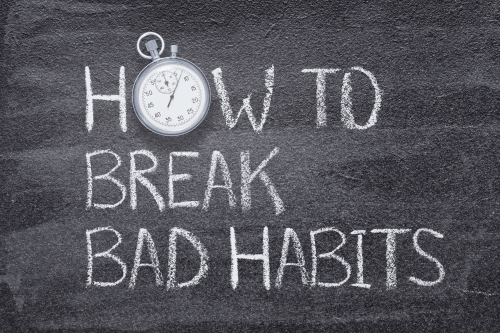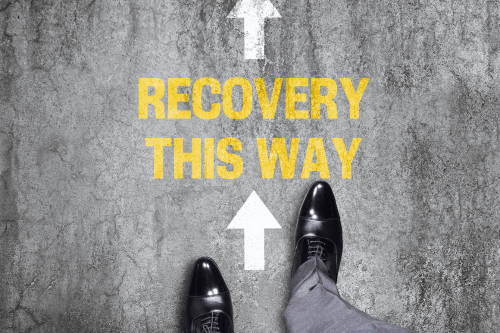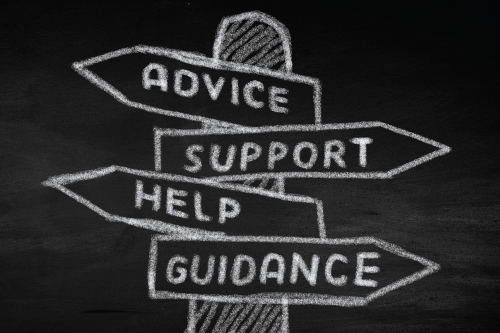

Breaking free from addiction is a decision that impacts every part of your life—your brain, your behavior, and your health. If you’re wondering how to break an addiction, you’re not alone. Millions struggle with substance abuse, but change is possible with the right support, structure, and mindset.
Addiction is a chronic disease that changes how your brain works. It hijacks the reward system, increasing dopamine and reinforcing addictive behavior that overrides normal behavior and rational decision-making. Over time, the substance becomes more important than sleep, relationships, and basic health, making it difficult to quit without structured support.
Substance abuse triggers compulsive behavior rooted in the brain’s altered chemistry. It reduces impulse control and increases the desire for euphoria, despite consequences like poor health, guilt, or broken relationships. This leads to continued use despite knowing the risks to your health and lifestyle, increasing the likelihood of relapse and long-term damage to both body and mind.
Breaking this cycle starts with understanding that addiction is not a weakness—it’s a medical condition that requires therapy, medication, and research-backed programs. Recognizing addictive behavior as part of a treatable disease empowers the patient to seek professional help from a health professional or physician without shame or delay.
Substances like opioids, stimulants, or alcohol affect the brain’s dopamine pathways. These changes create a surge of euphoria that disrupts natural pleasure responses and encourages compulsive behavior. This hijacks normal brain function, weakening the ability to resist the desire to drink, smoke, or use drugs regularly.
Over time, your brain becomes reliant on the substance to feel any pleasure at all, creating a strong habit loop. This physical dependence reinforces the addictive behavior and reduces motivation for healthy alternatives like sleep, exercise, or social interaction. The longer the substance is used, the more deeply it alters the brain’s chemistry and increases the risk of disease.
Quitting causes drug withdrawal symptoms like anxiety, nausea, or depression, which vary depending on the drug, dosage, and duration of use. Medication-assisted detox, especially for opioid use disorder, helps stabilize brain function using methadone or other treatment options. The brain struggles to rebalance itself without the drug, and contingency management or therapy is often needed to support the patient during this process.

Addiction often begins as a choice but develops into compulsive behavior. You might notice it in repeated use despite guilt, risk, or health problems. These are all signs that the behavior has crossed into substance use disorder.
The habit might involve alcohol, opioids, nicotine, or even behavioral patterns like gambling. What matters most is identifying the loss of control and seeking help before relapse occurs.
You can’t fix what you won’t face. The first step in how to break an addiction is admitting that there’s a problem. It takes courage, but this honesty opens the door to treatment and long-term sobriety.
Denial is common, fueled by guilt or fear. Talking to a health professional or physician can help break through these emotional blocks. At Sullivan Recovery in Mission Viejo, we guide patients through this initial phase with clarity and care.
Detox is the phase where the substance leaves the body. It’s often accompanied by uncomfortable drug withdrawal symptoms. These may include irritability, insomnia, fatigue, or even seizures in severe cases.
Medical detox uses tools like methadone or Suboxone for opioid use disorder. These medications help stabilize the brain’s dopamine response and reduce compulsive behavior tied to substance abuse. Quitting cold turkey without help can be dangerous, especially when stimulant use or long-term smoking is involved.
That’s why supervised programs like those at Sullivan Recovery are vital to a safe recovery. A licensed health professional or physician monitors the patient’s behavior, sleep patterns, and vital signs throughout the detox process to reduce risk and ensure better outcomes.
Cognitive-behavioral therapy (CBT) teaches patients to identify triggers and replace harmful thoughts. It is science-backed and effective across various substances. Therapy also helps address the guilt and stress tied to addictive behavior.
Contingency management is another proven approach. It uses reward systems to build motivation for sobriety. Sullivan Recovery incorporates both behavioral therapies to ensure progress is steady and trackable.

For opioid use disorder, MAT combines therapy with medication like methadone or buprenorphine. This reduces cravings, improves sleep, and supports long-term recovery. MAT is especially useful when combined with behavioral therapy.
Medication isn’t a standalone solution, but it stabilizes brain chemistry. This creates space for real behavior change. Our programs use MAT strategically under close supervision from licensed professionals.
Support helps maintain motivation. Whether it’s family, a sober living house, or group therapy, social connection reduces the risk of relapse. Isolation increases stress and temptation, especially during early recovery.
Programs like 12-step meetings, rehab groups, or sober communities are valuable tools. Sullivan Recovery offers structured outpatient programs so patients can build their support network while reintegrating into daily life.
Stress is a known trigger for relapse. Effective treatment teaches patients how to manage stress through healthy outlets—exercise, therapy, or mindfulness. This reduces the need to turn to substances for relief.
Guilt from past behaviors can also block recovery. Therapy helps patients process these emotions instead of burying them. Facing these feelings in a supportive environment promotes healing.
Changing your lifestyle supports lasting sobriety. That includes regular sleep, balanced meals, and exercise. A healthy body strengthens the brain’s reward system and reduces cravings.
Even small changes—like daily walks or consistent meals—can reduce relapse risk. Sullivan Recovery encourages these habits during outpatient care, helping patients develop lasting routines.

Advertising glamorizes drinking, smoking, or stimulant use. These constant cues can reactivate cravings, even after long periods of sobriety. Learning how to avoid or ignore these triggers is part of relapse prevention.
Behavior therapy helps patients spot these cues and respond with healthier behavior. Avoiding specific places, people, or routines that lead to use is also key. Recovery isn’t passive—it requires active management of risks.
Goals create direction in recovery. Whether it’s a week of sobriety or applying for a job, small wins build confidence. Motivation fluctuates, so having daily structure keeps progress steady.
Reward systems, therapy check-ins, and contingency management techniques help maintain drive. At Sullivan Recovery, we track these goals weekly, keeping patients accountable and encouraged.
Relapse doesn’t mean failure. It means the strategy needs adjustment. Many patients experience relapse before achieving full recovery—it’s part of the learning curve.
Therapy after relapse focuses on what triggered it. Was it stress, poor sleep, or lack of support? Once identified, the treatment plan evolves. At Sullivan Recovery, we help patients bounce back with stronger plans and better coping tools.
A sober living house offers structure without full hospitalization. It provides safety, accountability, and peer support. These homes reduce the risk of relapse after initial treatment.
Many patients transition from detox or outpatient programs to sober living. It’s a helpful bridge for rebuilding lifestyle habits. Sullivan Recovery connects patients with sober living options in Orange County for continued support.
Many wonder if rehab or outpatient programs are covered by insurance. The good news: most plans now cover addiction treatment, including detox, therapy, and medications.
Sullivan Recovery accepts most major insurance providers. Our team can help verify coverage, so patients can focus on getting better. Cost should never be a barrier to breaking addiction.

Choosing a program depends on the substance, duration of use, and co-occurring conditions. Some patients do well with outpatient care, while others need residential detox.
Sullivan Recovery specializes in outpatient drug and alcohol rehab. Our programs focus on behavior, therapy, and medication management. Every plan is built around what the patient truly needs to succeed.
Knowing how to break an addiction means accepting it’s not instant. Progress is often slow, with ups and downs. But with commitment, treatment, and support, recovery becomes a daily reality.
You may need to try more than one method—medication, therapy, lifestyle change—to find what works. Recovery isn’t one-size-fits-all, but success is possible for everyone.
Addiction can feel isolating, but you don’t have to face it alone. Whether you’re struggling with opioid use disorder, alcohol, or another substance, help is available. Sullivan Recovery in Mission Viejo offers structured outpatient programs, guided by science and focused on real change.
Understanding how to break an addiction is the first step. The next step is action. Reach out today to begin your recovery journey with a team that prioritizes your health, your goals, and your future.
At Sullivan Recovery, as an in-network provider we work with most insurance plans, such as:
And More
If you or a loved one are struggling with mental health challenges or substance abuse, reach out to Sullivan Recovery today. Our team of compassionate professionals is here to support your journey towards lasting well-being. Give us a call at 949-836-7180.
The timeline varies based on the substance, the length of use, and the individual’s health and support system. Some people begin to see changes in a few weeks, while others may need several months of therapy and medication. Consistent participation in programs like outpatient rehab can speed up recovery and reduce the risk of relapse.
It is possible, but much harder without professional support. Quitting cold turkey may lead to severe drug withdrawal symptoms, especially with substances like opioids or stimulants. Rehab offers structured therapy, physician oversight, and behavior-focused strategies to improve success rates and long-term sobriety.
Start by having a calm, honest conversation without judgment. Encourage them to speak with a health professional or attend one therapy session. Sometimes involving a counselor or intervention specialist can help guide them toward accepting support.
Not all addictions need medication, but some—especially opioid use disorder—respond best to a combination of medication and behavioral therapy. For others, such as alcohol or stimulant addiction, therapy and lifestyle changes may be effective. A health professional can evaluate which options are most appropriate.